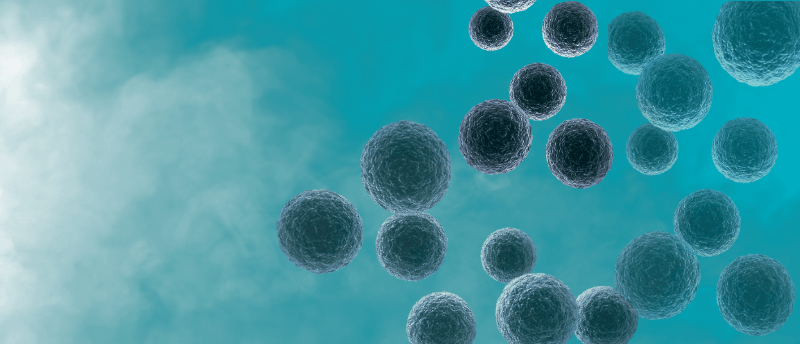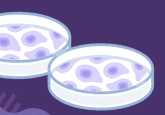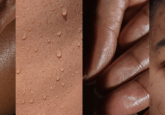Nature knows best: mimicking natural cryoprotectants for preserving cell-based assays

 Tom Congdon (left) is the CEO and Co-Founder of CryoLogyx (Coventry, UK), a University of Warwick (UK) spinout that develops technology for cryopreservation of cell-based assays and novel cryoprotectants. When Tom started his PhD, he was investigating how the natural freezing process compared to the scientific freezing process used throughout the life sciences for sample and reagent preservation.
Tom Congdon (left) is the CEO and Co-Founder of CryoLogyx (Coventry, UK), a University of Warwick (UK) spinout that develops technology for cryopreservation of cell-based assays and novel cryoprotectants. When Tom started his PhD, he was investigating how the natural freezing process compared to the scientific freezing process used throughout the life sciences for sample and reagent preservation.
In the life sciences, small molecules and solvents are used for cryopreservation with reasonably high efficacy; however, they’re highly toxic. Tom shares that while this approach was fine back in the day for immortalized cell lines and the like, now people are utilizing more advanced cell types, and the current cryoprotectants available can’t keep up. Therefore, Tom and Co-Founder Matt Gibson looked at how nature does it – using antifreeze proteins and antifreeze glycoproteins – and developed their technology to synthetically mimic the actions of those large cryoprotectants.
In this interview from ELRIG Research & Innovation (20–21 March 2024; Manchester, UK), we spoke to Tom about CryoLogyx’s breakthrough technology cryopreserving cells in experiment-ready formats, making strenuous cell culture protocols a thing of the past.
What inspired you to develop this method for revolutionizing cell plating?
I have been working in polymer science for a long time, and as we were developing our cryoprotectants, I observed that more and more of my colleagues and people I knew working in the therapeutics development space required access to cells for in vitro testing. However, they weren’t cell biologists; they didn’t have the expertise. We realized that we could use the cryoprotectants we were working on to develop easy-to-use cell-based assays that could be frozen, stored and then used by the end user without them needing a great deal of the time and effort required to culture and prepare cells for experiments.
So, compared to having to go through the lengthy process of cell culturing, our product only requires taking the cells out of the freezer. The cells are already plated and ready to go after you thaw them; this means you don’t have to worry about maintaining cell cultures or passaging on a Saturday night or that kind of thing. What we’ve done is turn traditional cell culturing into a frozen consumable that requires minimal experience. Because the cryoprotectants work so well, you can be sure that you’re getting a reliable, repeatable result from these cell-based assays.
Does the cryopreservation process differ based on cell type?
The most interesting thing we’ve found in commercializing the business is that it’s more the format that we’re freezing the cells in rather than cell type that affects our process. There are hundreds of different cell types, and we’re able to freeze them all reasonably easily. What has been more challenging has been changing the format of freezing. We started in 24-well plates, but then moving to a 96-well plate we had issues because of the physics of freezing. Moving from 96 to 384 wells proved a similar challenge, but we were getting better at understanding how to overcome it, allowing us to expedite the problem-solving process. This year, we’re hoping to expand our capability and offer more products in basically any format the user needs.
What techniques did you use to develop this technology?
This technology sits at a multidisciplinary intersection, requiring lots of different skills and approaches. As I mentioned, I’m a polymer scientist. My PhD and my first postdoctoral project was dedicated to developing polymer-based solutions for physical problems, understanding how antifreeze proteins worked and then testing several synthetic mimics to figure out what we needed to harness. I used controlled radical polymerization, size exclusion chromatography and ice crystal microscopy to carry out the initial work. However, to develop this technology, you also need experts in cell culture and cryopreservation, so the techniques involved in this process are highly varied.
How can these cryopreserved cell plates be used in the drug discovery process and beyond?
The plates are a convenient, fast and easy-to-use tool for drug and toxicity screenings. Right now, people are using high-throughput screening in the early stages of the drug development pipeline to assess drug candidates’ toxicity and their potential action against specific targets in cells, among other things. Therefore, having access to a frozen bank of assay-ready plates is super valuable.
We can culture at scale and produce batches of hundreds of plates at a time that will all be the exact same cell type with the exact same passage. Then, we can freeze all of those, and the end user can use what is essentially the same passage of cells for a whole screening campaign.
The other main advantage of using our plates for drug discovery is that, should something go wrong in the pipeline, you have more flexibility. For example, usually, the people supplying the bank of drug candidates for drug development are separate from the people doing the cell-based screening. So, 6 weeks in advance, the cell scientists get notice that they need to produce 300 plates for the screening campaign, and they manage to hit that 6-week target. There they are with hundreds of plates ready to go when they get word that the drug compounds are stuck in the post or there is some other issue. Those cells are only good for 3 more days and then they all have to be scrapped. If instead you have access to a bank of frozen cells, it makes the whole process a lot more flexible without needing to do a 6-week culturing process. You just wait a few days for the compounds, take out the plates you need, let them thaw and then you can do your screening.
Do you have any tips for best practice when using these plates?
We work hard to make the cells as easy to use as possible, so – in theory – you shouldn’t need any tips! The instructions for thawing the plates fit on the package the plates come in, which might not be an industry first, but we don’t see many other people doing it; you tend to get these kits that come with a six- or seven-page manual. My one piece of advice is to make sure that when you’re thawing the plates, all of the cells are thawed before you do the media exchange. This is key. We recommend 12–15 minutes, but if your incubator is much bigger, the thawing time can be a bit longer.
What’s next for CryoLogyx?
We just finished our seed round, and we’re now focusing on commercialization and getting the product out there; we have a distribution agreement set up so our plates can get into Europe with minimal issues. We’re also adding more and varied products to the catalog pretty much every other month for the rest of this year, working on suspension cryovial assay-ready cells for some hard-to-cryopreserve cell lines. Finally, we are also starting to offer a service we call custom-ready, a bespoke cell expansion service that turns your exact experiment into an assay-ready format.
The opinions expressed in this interview are those of the interviewee and do not necessarily reflect the views of BioTechniques or Taylor & Francis Group.




